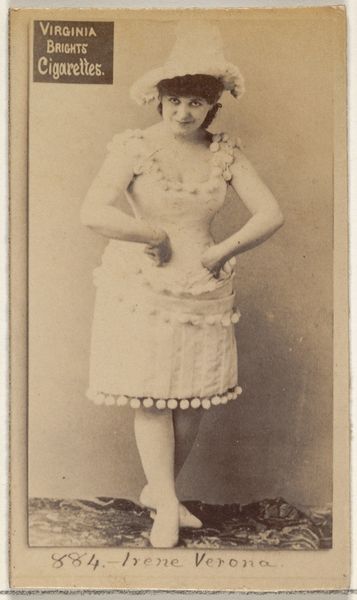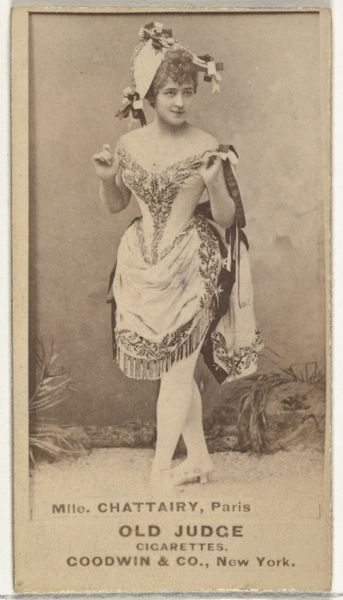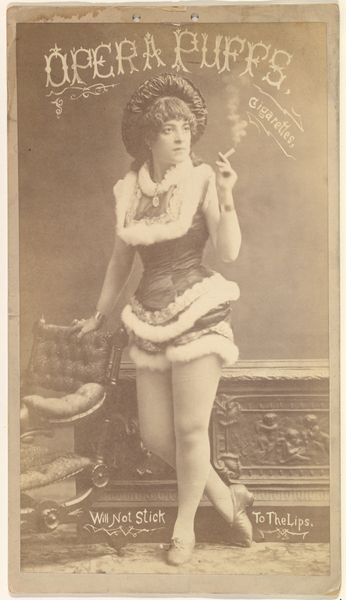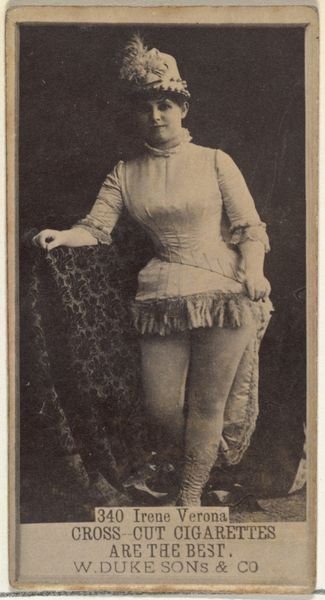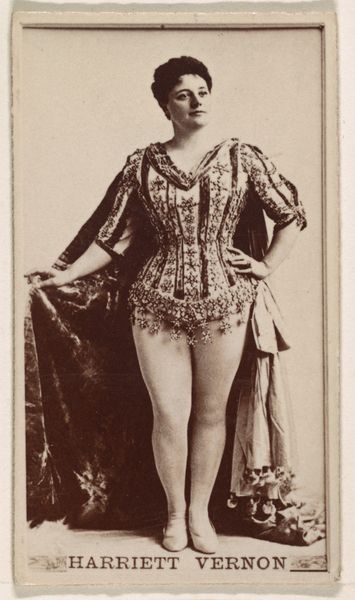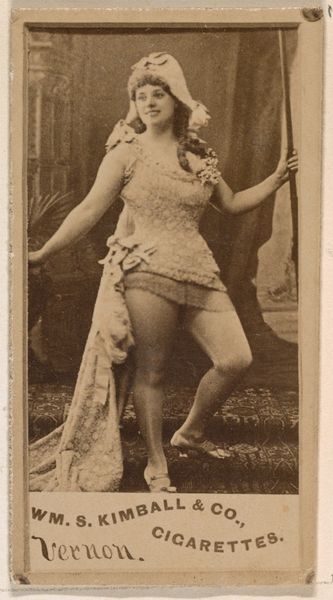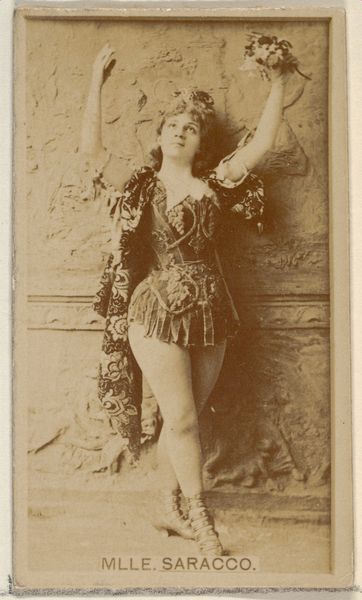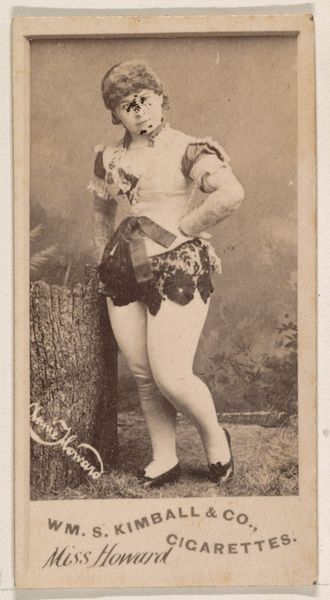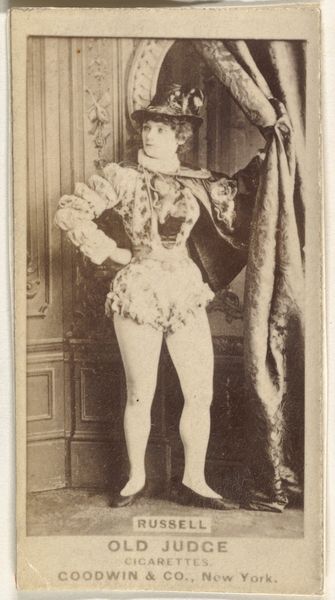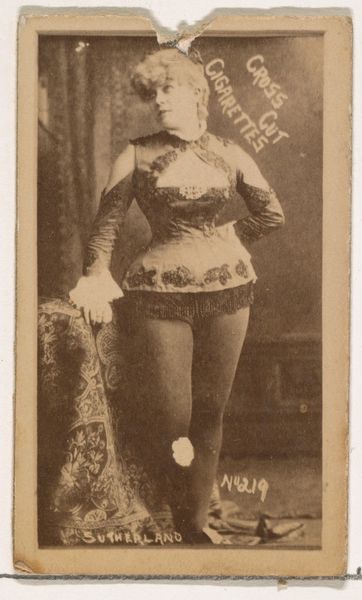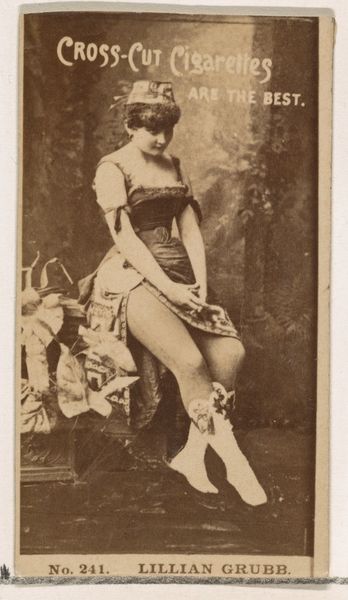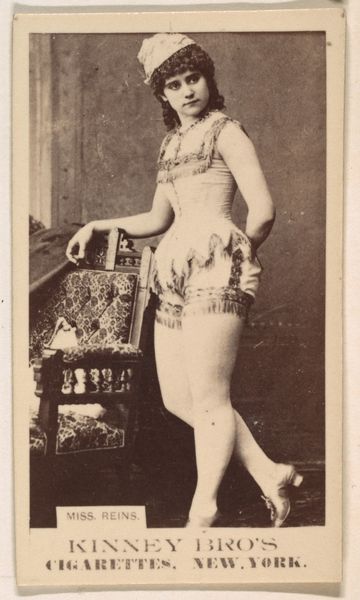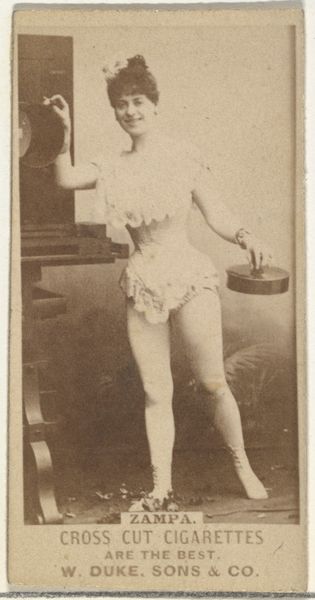
Card Number 65, Fay Templeton, from the Actors and Actresses series (N145-4) issued by Duke Sons & Co. to promote Cameo Cigarettes 1880s
0:00
0:00
drawing, print, photography
#
portrait
#
drawing
# print
#
photography
#
historical photography
#
folk-art
#
19th century
#
genre-painting
Dimensions: Sheet: 2 11/16 × 1 3/8 in. (6.8 × 3.5 cm)
Copyright: Public Domain
Curator: Immediately, the tactile nature of this card strikes me; the feel of the paper stock would've been paramount to its purpose. It feels inherently connected to mass production and accessibility. Editor: Yes, it's a potent visual encapsulation of the 1880s, a tobacco advertising card. This is "Card Number 65, Fay Templeton, from the Actors and Actresses series (N145-4)" by W. Duke, Sons & Co. Fay Templeton herself embodies so much about the performance of femininity and the burgeoning commodification of celebrity in the Gilded Age. Curator: Absolutely, the choice of a photograph further complicates the line between artistry and manufacture. Photography was increasingly mechanized at this point. This isn't a unique painted portrait, but a reproduced image linked directly to a capitalist product—cigarettes. Consider the labor involved: from the growing of tobacco to its processing and, ultimately, its promotion through these cards. Editor: And consider Templeton herself as labor. Her image, meticulously styled, performing femininity to sell cigarettes. The card subtly showcases both agency and constraint—she's a performer, yet contained within the objectifying gaze inherent in advertisement. Also, Duke's, this corporation… its own problematic history linked with the development of the American Tobacco Company and all its exploitative practices should also be examined. Curator: Precisely, the card stock is another key element of its socio-economic meaning. Think about where these were distributed, where discarded; the very ephemerality of it speaks to cycles of production, consumption, and waste. We must ask: what kind of social world is brought into being by this object and related methods of industrialised commerce? Editor: Beyond a simple advertisement, this card, now preserved in the Metropolitan Museum of Art, prompts us to consider celebrity culture. The card presents a vision of femininity manufactured for consumption alongside cigarettes, yet Templeton was real. Her existence then is enmeshed in how such capitalist distribution reshapes cultural landscapes of performance, audience and commodity, influencing perceptions about class, gender and sexuality. Curator: Yes, stepping back, you have this incredible intertwining of labor, commodification, and early celebrity culture within the bounds of a tobacco product promotion! Its visual and material economy raises crucial inquiries about labor and distribution chains and also changing modes of representing identities through early popular media. Editor: Definitely, what seems like a simple, quaint piece of ephemera actually opens a whole field of inquiry when we look at labor practices, advertising and performative identities as integral components.
Comments
No comments
Be the first to comment and join the conversation on the ultimate creative platform.
